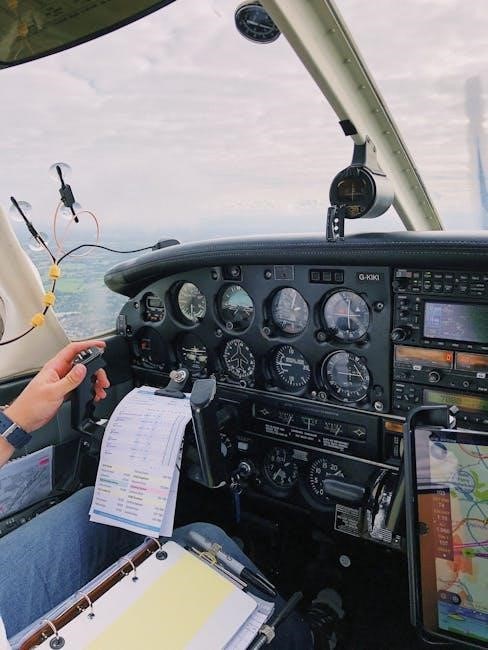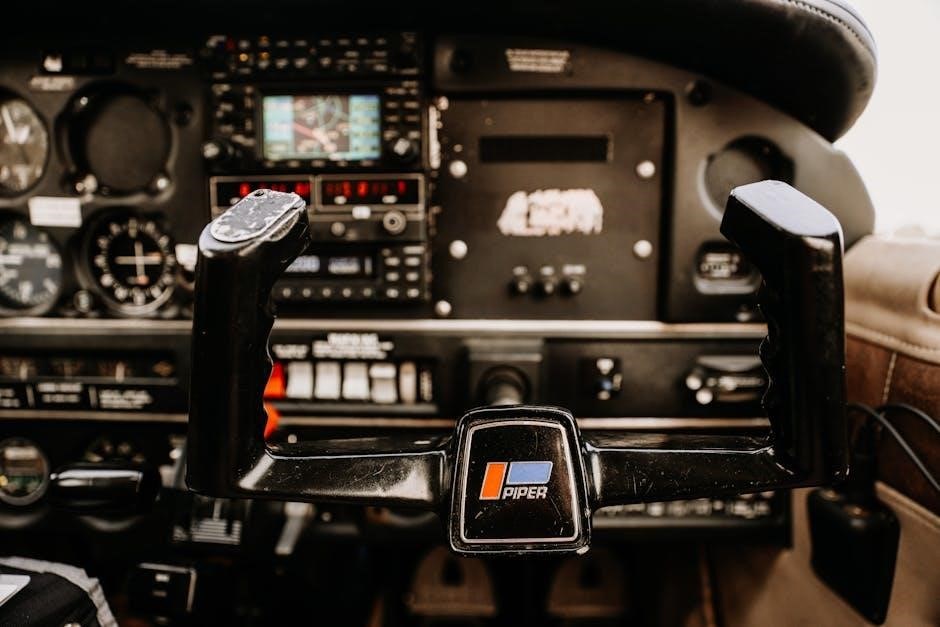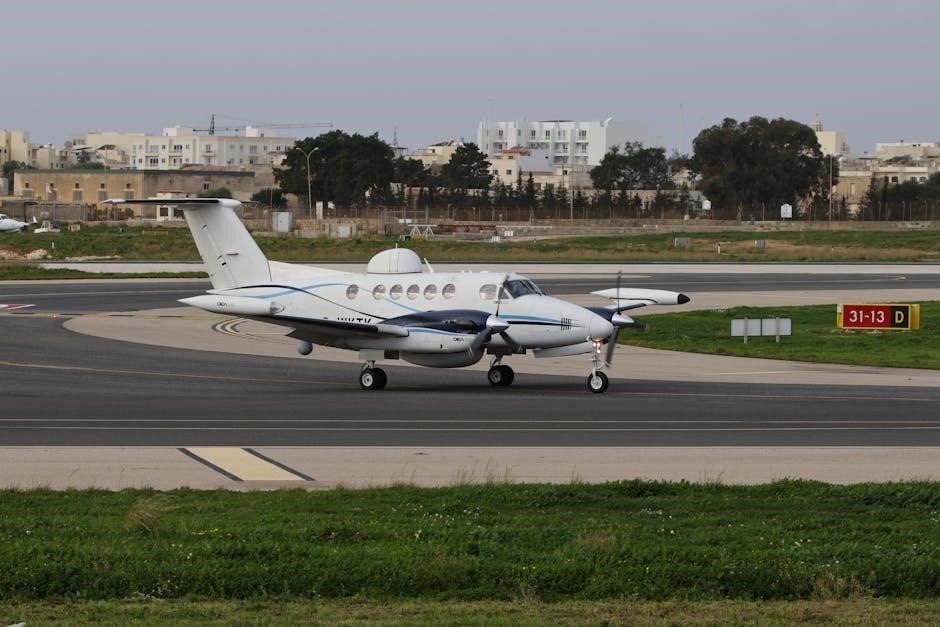Private Pilot Oral Exam Guide: A Comprehensive Overview
The Private Pilot Oral Exam Guide is a crucial resource for student pilots preparing for their FAA checkride․ It comprehensively covers subjects tested during review flights, ensuring candidates are well-prepared and confident under scrutiny․
Purpose of the Oral Exam
The oral exam serves a vital function in assessing a pilot candidate’s knowledge and understanding of aviation principles․ Examiners aim to determine if the applicant possesses a sufficient knowledge base for safe flight and continued learning․ It’s not about knowing everything, but demonstrating the ability to learn and apply aeronautical knowledge effectively․ A friendly demeanor and confident presentation during the oral exam can significantly contribute to managing stress and portraying competence․ The goal is to showcase preparedness and a commitment to lifelong learning in aviation, ensuring a safe and informed approach to flying․
Eligibility Requirements for Private Pilot Certification
To be eligible for a private pilot certificate, applicants must meet specific criteria outlined in 14 CFR 61․103․ These requirements include being at least 17 years of age, demonstrating the ability to read, speak, write, and understand the English language․ Furthermore, candidates must hold at least a third-class medical certificate․ They also need to pass both the knowledge and practical (flight) exams․ Candidates should also accumulate the required flight experience․ Meeting these eligibility standards is essential for pursuing private pilot certification and embarking on a journey in aviation; Adherence to these regulations ensures a solid foundation for safe and responsible flying․
Required Certificates and Documents for Flight
Before each flight, a pilot must ensure they possess all necessary certificates and documents․ This includes a pilot certificate, a current and appropriate medical certificate, and a government-issued photo identification․ The aircraft must have a valid registration certificate and an airworthiness certificate displayed․ Operating limitations and the aircraft flight manual (AFM) or pilot’s operating handbook (POH) must be onboard․ For international flights, additional documents such as a passport and aircraft radio station license may be required․ Ensuring all documents are present and valid is crucial for legal and safe flight operations, reflecting a pilot’s responsibility․

Key Knowledge Areas Covered
The oral exam covers essential areas like airworthiness, weather, regulations, airport operations, and airspace․ Mastery in these topics ensures a pilot’s competency and safety in various flight scenarios․
Airworthiness and Aircraft Maintenance
A key area involves understanding aircraft maintenance, including Airworthiness Directives (ADs), Time Before Overhaul (TBO), and general airworthiness requirements․ Demonstrating knowledge of these ensures flight safety and compliance with regulations․ Pilots must know how to determine if an aircraft is safe for flight, including pre-flight inspections and understanding maintenance logs․ They also should be able to explain the importance of adhering to maintenance schedules and addressing any discrepancies found during inspections․ This area emphasizes the pilot’s responsibility in maintaining a safe and airworthy aircraft, highlighting the critical link between maintenance and flight operations․
Weather Services and Regulations
Understanding weather services and regulations is paramount․ Pilots must demonstrate proficiency in obtaining and interpreting weather briefings, understanding aviation weather reports (METARs, TAFs), and recognizing hazardous weather conditions․ Knowledge of regulations concerning weather minimums for VFR flight, cloud clearances, and visibility requirements is crucial․ Furthermore, pilots should be able to make informed decisions based on weather conditions, including go/no-go decisions and en-route diversions․ A comprehensive grasp of weather resources, such as Flight Service Stations and online tools, ensures safe and informed flight planning, emphasizing the pilot’s responsibility in mitigating weather-related risks during flight operations․
Airport Operations and Airspace
Proficiency in airport operations and airspace is critical for safe flight․ Pilots must understand airport markings, signs, and lighting, along with procedures for runway usage, taxiing, and radio communication with air traffic control․ A comprehensive knowledge of different airspace classifications (Class A, B, C, D, E, G) is essential, including their dimensions, entry requirements, and operating rules․ Additionally, pilots should be familiar with procedures for operating at towered and non-towered airports, including proper radio calls and traffic pattern procedures․ Mastery of airspace regulations ensures pilots can navigate safely and efficiently within the National Airspace System, adhering to established protocols and minimizing potential conflicts․
Flight Planning and Performance
Comprehensive flight planning is paramount for a safe and successful flight․ This includes selecting appropriate routes, considering weather conditions, and calculating fuel requirements to ensure sufficient reserves․ Pilots must understand how to use navigation charts, calculate true airspeed, ground speed, and estimate time en route․ Aircraft performance data, such as takeoff and landing distances, climb rates, and cruise speeds, must be carefully analyzed based on factors like weight, altitude, and temperature․ Accurate weight and balance calculations are crucial to maintain aircraft stability and control․ Thorough flight planning, coupled with diligent performance assessment, enables pilots to make informed decisions and mitigate potential risks․

Privileges and Limitations of a Private Pilot
Private pilots enjoy the privilege of flying for personal or recreational purposes․ However, they face limitations, including restrictions on carrying passengers or property for compensation, ensuring flight safety and regulatory compliance․
Restrictions on Carrying Passengers and Property
A primary restriction for private pilots involves the carriage of passengers or property․ Specifically, a private pilot cannot carry passengers or property for compensation or hire․ This limitation is in place to ensure that commercial operations are conducted by pilots holding the appropriate certifications and ratings․ While private pilots can share flight expenses with passengers, they cannot operate an aircraft for the purpose of generating profit․ This restriction aims to maintain safety standards and regulatory compliance within the aviation industry, differentiating between recreational and commercial flying activities․ Understanding these limitations is crucial․
Flying in Furtherance of a Business
Another significant restriction for private pilots concerns flying in furtherance of a business․ Generally, a private pilot cannot act as pilot in command of an aircraft in connection with any business unless the flight is only incidental to that business or employment․ For instance, a real estate agent cannot use their pilot certificate to transport clients to view properties for sale, as this would be considered flying in furtherance of their business․ However, a private pilot could fly for personal transportation to a business meeting, provided the flight is not directly related to generating revenue․ Understanding the nuances is essential․

Effective Study Strategies
Effective preparation involves utilizing resources like the Private Pilot Oral Exam Guide․ Supplement this with mock oral checkrides conducted by your instructor to identify and address any weak areas in your knowledge․
Utilizing the Private Pilot Oral Exam Guide
The Private Pilot Oral Exam Guide is designed as a comprehensive tool to prepare student pilots for the oral examination portion of their checkride․ It covers subjects a candidate will be tested on, helping identify strengths, weaknesses, and gaps in aeronautical knowledge․ By using the guide, applicants learn what to expect during the exam and how to demonstrate subject mastery confidently․ Updated editions align with the Airman Certification Standards, providing the latest information on weather services, regulations, airport operations, airspace, and flight planning․
Mock Oral Checkrides with an Instructor
Engaging in mock oral checkrides with a qualified flight instructor is essential for private pilot candidates․ These simulated exams replicate the actual checkride environment, allowing students to practice answering questions under pressure․ Instructors can identify weak areas in the student’s knowledge base, enabling focused study sessions․ By participating in these practice sessions, students can refine their understanding of key concepts, improve their ability to articulate answers clearly, and boost their confidence․ Furthermore, mock orals help students become familiar with the format and types of questions they will encounter during the real examination․

Maintaining Confidence During the Exam
Approaching the oral exam with a friendly and confident demeanor is crucial․ This not only projects competence but also helps manage stress levels, ensuring optimal performance and a clearer presentation of knowledge․
Presenting a Friendly and Confident Demeanor
Walking into your oral exam with a friendly smile can significantly impact the examiner’s perception of your preparedness and confidence․ This approach not only portrays you as a capable pilot but also helps in managing your own stress levels․ A positive attitude can create a more relaxed environment, allowing you to think more clearly and articulate your knowledge effectively․ Remember that the examiner is also evaluating your ability to handle pressure, and maintaining a calm and friendly demeanor demonstrates composure and self-assurance․ This will help you to manage your own stress level․
Demonstrating Subject Mastery
During the oral exam, it’s crucial to demonstrate a thorough understanding of aviation principles and regulations․ This involves not only knowing the answers but also being able to explain the reasoning behind them․ Use clear and concise language, avoiding jargon or technical terms that you don’t fully understand․ Provide detailed explanations, drawing upon real-world examples or scenarios to illustrate your points․ Show that you can apply your knowledge to practical situations․ Be prepared to elaborate on your answers․ Be confident and explain clearly, it shows that you are an adequately skilled pilot who understands the material․
